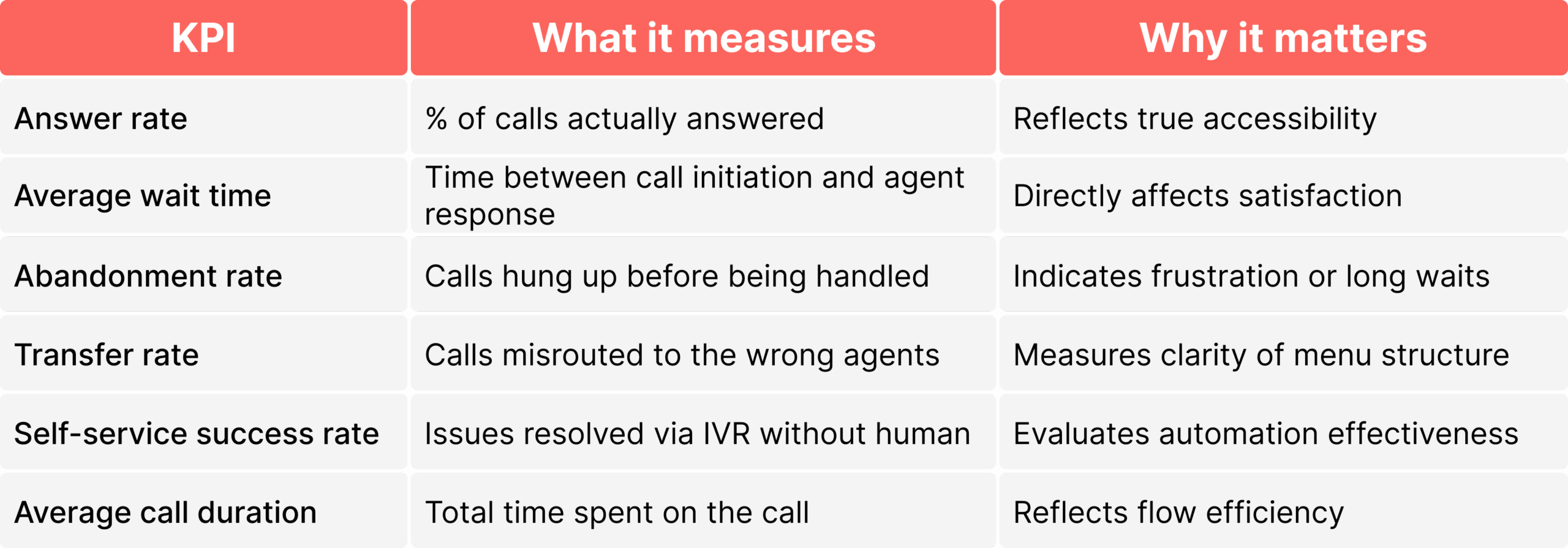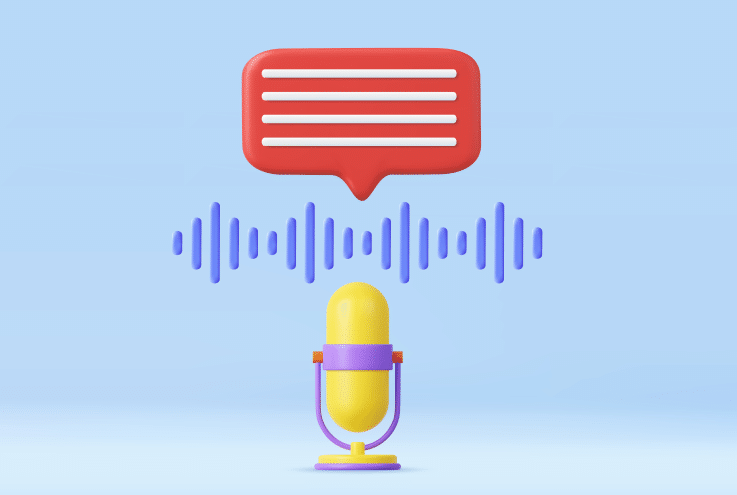In a world where customer experience is a key differentiator, a phone greeting remains one of the first levers of brand image, trust, and effectiveness. Too often relegated to a recorded message or an impersonal IVR system, it deserves strategic attention—it’s the first voice your customers hear, the first message they receive, and the first impression they form of your brand.
A strong phone greeting is not just “Hello, you’ve reached…”. It’s a carefully designed, structured, and personalized journey that guides callers, informs them, and helps them quickly reach the right answer or person. It also serves as a performance tool for internal teams by reducing misrouted and low-value calls.
This comprehensive guide offers a clear, structured approach for designing an effective phone greeting system for businesses. From defining your objectives to setting up scenarios, adopting best practices, leveraging available technologies (including visual IVR), showcasing concrete examples, and establishing performance indicators—follow this guide to turn your phone greeting into a powerful driver of customer satisfaction.
Phone Greeting: A Strategic Lever for Customer Experience
The Phone — A Still Preferred Channel
Despite the growth of digital channels like chat, messaging, and social media, 76% of consumers globally still prefer using the phone for customer support, and 62% favor human-assisted channels overall (XM Institute, Global Study: Consumer Channel Preferences, 2024). This underlines the enduring importance of human voice in resolving issues, obtaining clarity, and fostering human connection.
For many companies, the first call shapes the entire customer relationship. A poorly structured, impersonal, or inaccessible greeting can lead to frustration, call abandonment, or even customer churn.
Your Greeting Reflects Your Professionalism
Your phone greeting acts as a vocal business card. It communicates:
- Your company’s seriousness (tone, clarity, audio quality)
- Your internal organization (smooth call path, quick routing)
- Your commitment to customer experience (personalization, simplicity, accessibility)
Beyond first impressions, it’s a tool for operational efficiency:
- Filters and qualifies calls via IVR
- Automates simple requests without agent involvement
- Routes calls to the right department using precise rules (hours, language, queue)
- Protects agent availability while maintaining high service quality
An Opportunity to Simplify Customer Journeys
With omnichannel integrations, a phone greeting can be a gateway to more efficient channels—messaging, email, self-service, even deferred chat. This is where call deflection comes into play. Later in this guide, we’ll explore how a well-designed greeting can smartly redirect callers to quicker, more appropriate channels without compromising satisfaction.
Start with Strategy: Define Your Objectives
Before drafting scripts or configuring your IVR, you must establish a strong strategic foundation. Too often, phone greetings are viewed as a technical “add-on” rather than a core part of the caller experience. And great experiences start with clear goals.
Ask Yourself the Right Questions
- What is the primary purpose of my phone greeting?
- Is it meant to filter calls, provide information, automate certain requests, or quickly connect to a live agent?
- Should I offer a self-service journey or prioritize immediate access to a human?
- What are my call volumes and peak periods?
- Does the system need to handle high volumes of simultaneous calls?
- Are there critical periods when queues fill up (e.g., sales events, technical incidents, accounting deadlines)?
- What are my current performance indicators?
- Answer rate?
- Average wait time?
- Drop-off rate within the IVR?
- Transfer rate to agents?
- What level of personalization is required?
- Should I greet VIP clients, prospects, or international callers differently?
- Do I need a system that adapts in real-time (based on time, day, or caller profile)?
- Where does the phone greeting fit in my overall customer journey?
- Is it part of an omnichannel strategy?
- Can it enable smart call deflection to more efficient digital channels?
Common Strategic Objectives
- Reduce unanswered calls
- Streamline first-contact interactions
- Save agent time by filtering simple requests (e.g., hours, order status)
- Improve perceived quality on first interaction
- Redirect calls intelligently to digital touchpoints via visual IVR or SMS
Once your objectives are clearly defined, it’s time to turn that strategic vision into a concrete system. To do this, you should design your phone greeting as a true user journey, intelligently combining messaging, routing, interaction, and modern technologies like visual IVR. Let’s now explore the key components of an effective and modern business phone greeting.
Key Components of a Modern & Effective Phone Greeting
An effective phone greeting is more than just an introductory message. It relies on the seamless orchestration of several elements to guide, reassure, and direct your customers efficiently. Here are the essential building blocks to consider.
Phone Greeting: Set the Tone from the First Second
This is the entry point to the entire phone experience. It must immediately:
- Confirm that the caller has reached the right place
- Reflect your brand image (professional, warm, dynamic)
- Introduce the next steps in the call
Best practices:
- Be clear and concise (< 20 seconds)
- Use a natural voice or high-quality text-to-speech
- Tailor the message to the time of day (e.g., open/closed hours)
Hold Music and Transparency Around Wait Time
Waiting is part of the journey. Instead of leaving it passive, turn it into a managed experience:
- Hold music: choose a tone that fits your brand identity
- Queue position announcements: “You are the third caller…”
- Estimated wait time: reassure the caller with an approximate duration
- Callback option: “Press 1 to receive a callback without losing your place”
Interactive Voice Response (IVR)
The IVR helps callers navigate simple choices in order to:
- Qualify requests (e.g., “Press 1 for support, 2 for billing…”)
- Route to the right department or person
- Automate basic requests without human intervention
Best practices:
- Limit to 5–6 options
- Allow return to the previous menu
- Always offer the option to speak with a live agent
Visual IVR: Offer a Modern, Intuitive Alternative
Visual IVR (or mobile call deflection) provides an interactive interface directly on the caller’s smartphone. It enables:
- Faster, visual navigation
- Redirection to digital channels (chat, WhatsApp, FAQ…)
- A smoother experience, especially for mobile-first users
Example:
The caller receives an SMS with a link to an interactive menu: “Track my order”, “Request a callback”, “Chat with an advisor on WhatsApp”
Smart Routing: Connect to the Right Resource
After the IVR, routing determines who handles the call, based on:
- Agent availability
- Skills (language, service, expertise)
- Caller history (VIP client, frequent caller, etc.)
- Specific business rules (priority, queues by topic or urgency)
Handling Special Situations: Overflow, After-Hours, and Incidents
Your phone greeting must account for more than just ideal conditions:
- Tailored messages outside business hours
- Overflow handling (redirect to other queues or services)
- Alternative paths during high-traffic periods
- Redirect to asynchronous channels (email, web form)
Best Practices for a Successful Phone Greeting
Setting up a phone greeting system isn’t enough. To be truly effective, it must follow a series of guidelines rooted in UX and customer relationship best practices. Below are the key recommendations to apply:
Think like a user, not like a technician
It’s your customers, not you, who will use your IVR. Too often, the flow is designed based on internal company logic… not the caller’s experience.
Tip: Regularly test the journey as if you were a first-time customer. Spot friction points, confusing areas, or dead ends.
Be concise and direct
Long greetings or endless menus increase call drop rates. Your customer doesn’t want a novel—they want a quick answer.
Recommendations:
- Intro message under 20 seconds
- Menu limited to 6 options
- Avoid vague options like “For any other request, press 9” unless truly necessary
Always provide a human exit
Even with automation, some callers prefer—or need—to speak with a human. Don’t trap them in a maze.
Always include an option like “Speak with an advisor” in your menus.
Offer multilingual support if needed
If you serve international audiences, propose a language selection right from the start. This reduces misunderstandings, misrouting, and caller frustration.
Update your messages regularly
Your business evolves, your hours change, and your brand voice does too. So your phone greeting must stay up to date.
Checklist:
- Re-listen to your greetings regularly
- Ensure they reflect your current operations
- Align the tone with your broader communication strategy
Test, listen, adjust
Your IVR shouldn’t be set in stone. Analyze key data like wait times, drop-off rates, and transfers to fine-tune continuously.
Tip: Ask for feedback with a short satisfaction survey at the end of the call to evaluate how your greeting is perceived.
Write your scripts with care
Phone greetings are real content. They should be clear, smooth, and authentic. Write them as carefully as you would an email or radio ad.
Pro tip: Read your script aloud several times before recording. It must sound fluid and natural.
Tools & Technologies for Next‑Generation Phone Greetings
The era of basic answering machines with fixed options is over. Today’s tools offer powerful possibilities to intelligently automate, contextualize each call, and track real-time performance. Here are the technologies to build a truly effective phone greeting:
Text‑to‑Speech (TTS): Give your greeting a vibrant voice
TTS converts written text into a live-sounding speech message. This technology allows you to:
- Avoid manual recording of every message
- Enable rapid updates (e.g., emergency closures)
- Deliver a natural, clear, multilingual synthetic voice
Ideal for fast-moving businesses or multi-location operations.
Dynamic Messaging and Personalized Variables
Welcome messages can adapt automatically based on:
- Call time or day
- Caller ID or call history
- Client status (VIP, open case, repeat caller…)
This customization personalizes the voice experience in the same way you would with marketing emails.
Example:
“Hello [First Name], thanks for calling us again. Your open case is currently being processed.”
Personalized Call Scenarios & CRM Integration
With CRM or customer database integration, you can:
- Offer specific journeys for certain profiles
- Automatically route callers to their usual advisor
- Preload customer records before picking up
Result: a more contextualized, smoother, and human experience.
Real-Time Stats & Detailed Reporting
A phone greeting isn’t passive. You need to be able to:
- Track answer rate, wait times, abandonment, transfers
- Measure performance of each menu, scenario
- Export consolidated reports for managers or internal clients
This data allows you to adjust messages, staffing, and schedules based on actual usage.
Professional Phone Greeting Examples
Here are sample scripts to adapt to your company’s identity, audience, and industry. Whether you’re an SME, a medical practice, an innovative firm, or a public service, these suggestions are effective:
Welcome with style when calls begin
A greeting sets the tone. It should be short, reassuring, and reflective of your brand:
- Professional (B2B):
“Hello and welcome to [Company Name]. Thank you for calling. We will connect you to the appropriate department shortly.” - Warm (consumer-facing):
“Hi there! You’ve reached [Company Name]. We’re happy to hear from you—please hold for the next available advisor.” - Premium (high-end brands/service firms):
“Hello and thank you for contacting [Company Name]. One of our experts will personally assist you shortly.”
Clearly guide callers when multiple services are available
A well-structured menu helps without overwhelming:
- Service provider menu:
“For contract questions, press 1. For a quote, press 2. To speak with an advisor, press 0.” - Tech or startup menu:
“For technical support, press 1. For budget queries, press 2. To say hello, press 3.” - Multi-location menu (e.g., public services):
“For headquarters, press 1. For Paris branch, press 2. For Lyon branch, press 3.”
When calls can’t be answered immediately—manage the waiting
Waiting is inevitable, but transparent communication eases frustration:
- Queue position announcement:
“You are caller number 4. An advisor will assist you shortly.” - Estimated time + options:
“Estimated wait time is less than 3 minutes. Press 1 to request a callback.” - Friendly tone:
“Hang in there—we’ll be with you soon! You’re in the queue, but not for long.”
Outside business hours—inform with clarity
A clear after-hours message shows organization and respect for caller time:
- Formal:
“Hello. Our offices are currently closed. We’re open Mon–Fri, 9 AM–6 PM. Please call back or email us.” - Empathetic:
“Thanks for your call. It’s a bit late to reach us now, but we’ll get back to you first thing tomorrow morning.” - Automated + digital alternative:
“You’ve called outside of our hours. Most requests can be handled online at [URL].”
Transaction & Appointment Scenarios
Some companies need to reassure or secure the caller regarding sensitive matters.
- Secure transactions by phone (IVR or live agent):
“You are about to make a secure payment. Please have your card ready and press 1 to continue.” - Automated appointment booking:
“To schedule an appointment, press 1. You will receive a confirmation via SMS.” - SMS link delivery (Visual IVR):
“To save you time, we’ve sent a link via SMS. Click to access our interactive service.”
Incident or exceptional situation handling
Clarity and transparency maintain trust during challenges:
- Technical issue alert:
“Due to a current incident, wait times may be longer than usual. We’re working quickly to resolve the issue.” - Exceptional closure notice:
“Our offices are exceptionally closed today. Please contact us tomorrow, or visit our site for more information.”
Measure the Effectiveness of Your Phone Greeting: Monitoring & Analytics
Even a well-designed phone greeting must evolve. To ensure long-term performance, it’s essential to regularly assess its effectiveness using accurate data. Analysis helps identify friction points, refine call flows, and continuously improve the customer experience.
Why measure?
Phone greetings are a strategic touchpoint. Tracking performance means you can:
- Optimize the user journey
- Reduce abandonment rates
- Route calls more efficiently
- Improve customer satisfaction from the very first interaction
Key Performance Indicators (KPIs)
Here are the essential metrics for evaluating your phone system:

How to Analyze Your Results
The ideal setup includes a real-time dashboard that allows you to:
- Filter by period, service, or call type
- Visualize with charts, heatmaps, or exit points by menu
- Compare before/after any change
Some platforms even allow A/B testing of scripts or menus to determine which versions are most effective.
Adapt, Test, Optimize
Measuring is only the first step—adjusting is what brings results. Based on your data:
- Update underused messages or menu options
- Reduce wait times by reallocating resources
- Identify overload hours and adjust routing
- Automate more recurring queries if self-service rates are low
A strong phone greeting is a living system—it should evolve alongside your business, your customers, and their habits. Analytics give you the insights to transform it into a continuous improvement tool.
Conclusion
A company’s phone greeting is no longer just a “voicemail message”—it’s an audio storefront, a strategic interface, and an operational efficiency tool. It engages your brand from the first second, guides customers through their journey, and contributes significantly to either satisfaction… or frustration.
By anchoring your phone greeting in a strategic approach, leveraging the right tools (IVR, TTS, personalization, intelligent routing), and continuously tracking its performance, you turn every call into an opportunity—an opportunity to serve better, build loyalty, and make a lasting impression.
Whether you’re a growing SME, a structured enterprise, or a multisite organization, voice remains a trusted channel. And every well-thought-out greeting is a promise kept.
Take time to listen to what you say to your clients… and what that says about you.
- 1. Phone Greeting: A Strategic Lever for Customer Experience
- 2. Start with Strategy: Define Your Objectives
- 3. Key Components of a Modern & Effective Phone Greeting
- 4. Best Practices for a Successful Phone Greeting
- 5. Tools & Technologies for Next‑Generation Phone Greetings
- 6. Professional Phone Greeting Examples
- 7. Measure the Effectiveness of Your Phone Greeting: Monitoring & Analytics
- 8. Conclusion



